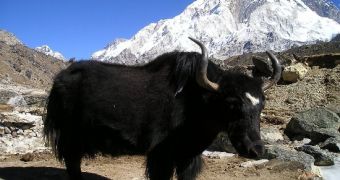The International Union for the Conservation of Nature now made it public news that environmentalists in charge of keeping a close eye on the wildlife inhabiting a Tibetan park have recently stumbled upon roughly 1000 yaks.
These animals are said to inhabit the northern regions of a plateau referred to as Hoh Xil, and conservationists hope that their living in this area in such large numbers stands as proof that the species is making a comeback.
For those unaware, yaks are presently listed as a vulnerable species, which is why they are protected by law in both this plateau and in other regions.
Based on the fact that less than 1% of these yaks varied in terms of color from the others, the conservationists who found them believe that they are true wild specimens, meaning that they did not get the chance to breed with domestic yaks. Live Science quotes wildlife researcher Joel Berger, who made a case of how, “Wild yaks are icons for the remote, untamed, high-elevation roof of the world.”
“While polar bears represent a sad disclaimer for a warming Arctic, the recent count of almost 1,000 wild yaks offers hope for the persistence of free-roaming large animals at the virtual limits of high-altitude wildlife,” Joel Berger went on to add.
Interestingly enough, very little is known about yaks, except for the fact that they are the third largest animals presently inhabiting Asia (the first two are the elephant and the rhino), and that they mainly live in remote regions situated at elevations of 13,000 to 20,000 feet (4,000 to 6,100 meters).
Commenting on the finding of these animals, Joe Walston, the WCS executive director of Asia programs, stated as follows:
“For millennia, yaks have sustained human life in this part of Asia, it would be a cruel irony if their reward is extinction in the wild. Thankfully, we have a chance now to secure their future and give back a little of what they have provided us.”

 14 DAY TRIAL //
14 DAY TRIAL //